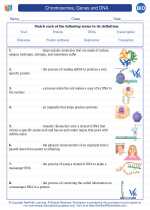Chromosomes, Genes, and DNA
Chromosomes, genes, and DNA are essential components of the genetic material that carries the hereditary information in living organisms. Understanding these concepts is fundamental to comprehending the mechanisms of inheritance and the basis of genetic variation.
1. DNA (Deoxyribonucleic Acid)
DNA is a molecule that carries the genetic instructions for the development, functioning, growth, and reproduction of all known living organisms and many viruses. It is a long polymer made from repeating units called nucleotides, each consisting of a sugar, a phosphate group, and a nitrogenous base. The nitrogenous bases in DNA are adenine (A), thymine (T), cytosine (C), and guanine (G).
Key points to remember:
- DNA is a double-stranded helical structure.
- The specific sequence of nucleotides forms the genetic code that determines the traits of an organism.
- DNA replication is the process by which DNA makes a copy of itself during cell division, ensuring genetic continuity.
- The structure of DNA was first elucidated by James Watson and Francis Crick in 1953.
2. Genes
Genes are specific sequences of DNA that encode instructions for producing proteins or functional RNA molecules. They are the basic units of heredity and can be passed from parent to offspring. Genes determine traits such as eye color, blood type, and susceptibility to certain diseases.
Key points to remember:
- Genes are located on chromosomes, which are thread-like structures found in the nucleus of eukaryotic cells.
- Each gene occupies a specific position on a chromosome called a locus.
- Alleles are different forms of a gene that can produce distinguishable traits.
- Mutations in genes can lead to genetic disorders or variations in traits.
3. Chromosomes
Chromosomes are long, continuous pieces of DNA that contain many genes. In eukaryotic cells, chromosomes are found within the nucleus. Humans typically have 46 chromosomes (23 pairs) in each cell, with one set inherited from each parent.
Key points to remember:
- Chromosomes are visible under a microscope during cell division when they condense and become tightly coiled structures.
- Sex chromosomes (X and Y) determine an individual's sex, while the remaining 22 pairs are autosomes.
- Changes in the number or structure of chromosomes can lead to genetic disorders, such as Down syndrome.
- Karyotyping is a technique used to visualize and evaluate an individual's chromosome arrangement.
Study Guide
To master the concepts of chromosomes, genes, and DNA, consider the following study guide:
- Review the structure of DNA, including the sugar-phosphate backbone, nitrogenous bases, and complementary base pairing.
- Understand the process of DNA replication and its significance in genetic inheritance.
- Explore the relationship between genes and proteins, and how gene expression leads to the production of specific traits.
- Examine the principles of Mendelian genetics, including the concepts of dominant and recessive alleles, and Punnett squares.
- Learn about chromosomal disorders and their impact on human health and development.
- Practice interpreting karyotypes and understanding the genetic basis of specific traits or disorders.
By engaging with these study topics and actively participating in related activities, you can develop a comprehensive understanding of chromosomes, genes, and DNA, and their role in inheritance and variation.
[Chromosomes, Genes And DNA] Related Worksheets and Study Guides:
.◂Biology Worksheets and Study Guides High School. Chromosomes, Genes and DNA
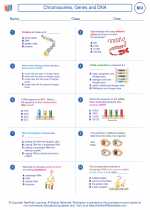
 Worksheet/Answer key
Worksheet/Answer key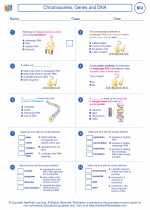
 Worksheet/Answer key
Worksheet/Answer key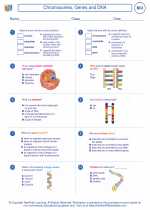
 Vocabulary/Answer key
Vocabulary/Answer key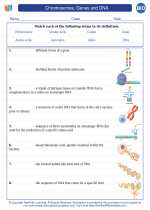
 Vocabulary/Answer key
Vocabulary/Answer key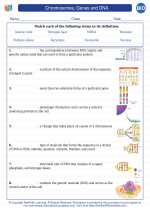
 Vocabulary/Answer key
Vocabulary/Answer key